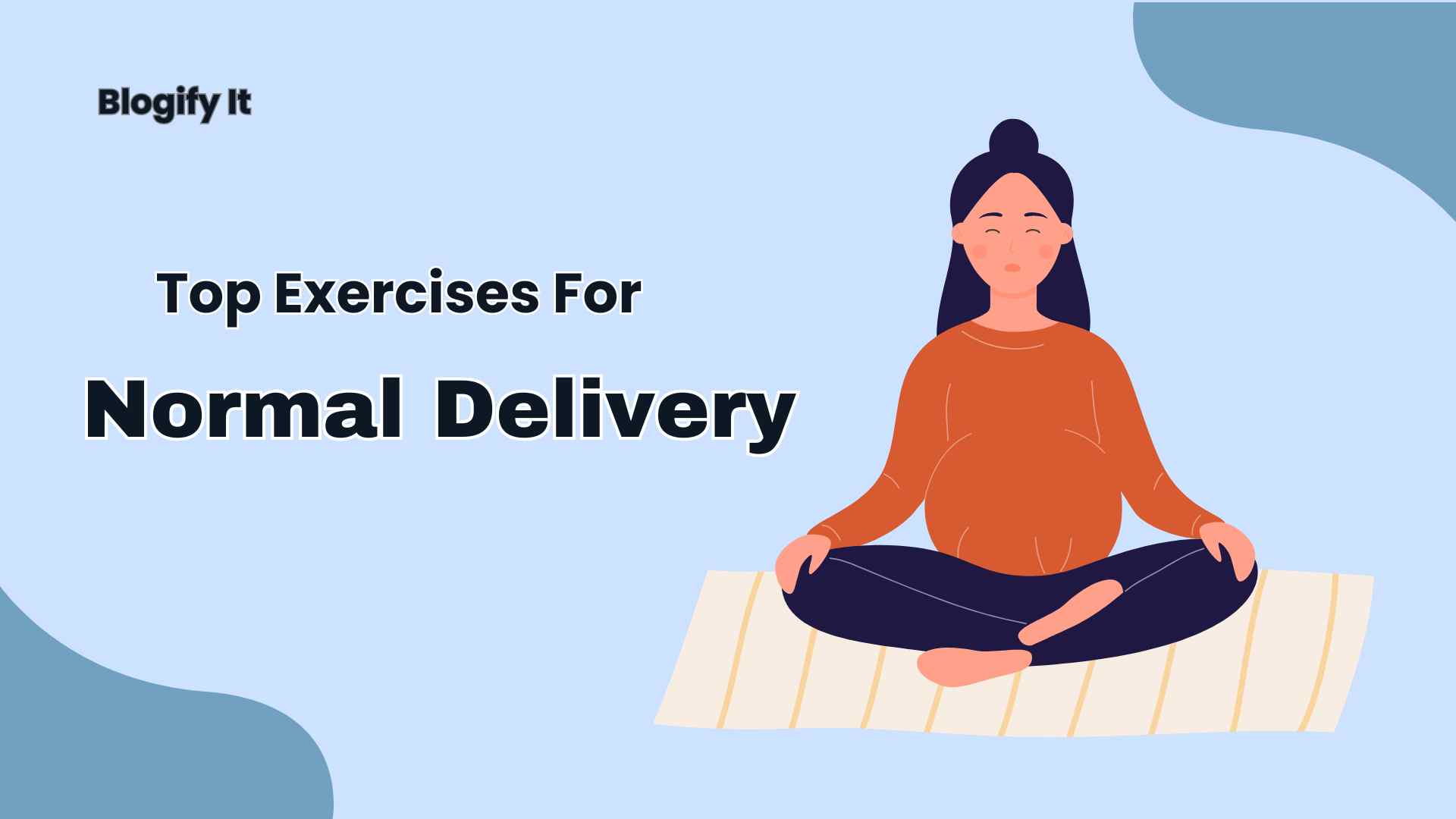Things You Should Do During the 3rd Trimester of Pregnancy
Congratulations! You’ve made it and reached the third trimester, the final stage of pregnancy. Soon, your journey of carrying a little sunshine in your tummy will end. And no matter how your journey has been, you’ll always miss this time. On one hand, you cannot wait to welcome your little one; on the other hand, you still have some doubts. That’s why you’re here, searching for things you should do during the 3rd trimester of pregnancy.
So, considering the whirlwind of emotions and the physical changes you’re experiencing, it’s completely understandable that you’re seeking guidance on navigating this final trimester confidently.
Today, in this blog, we’ll discuss what should you do during the third trimester of pregnancy and what shouldn’t. So, let’s get started with the basics.
When Does the Third Trimester Start, and When Does it End?
The third trimester of pregnancy typically begins around week 28 and lasts until the birth of your baby, which usually occurs around week 40. However, every pregnancy is unique, so these timelines can vary slightly from woman to woman.
During this final stage of pregnancy, your body undergoes significant changes to prepare for childbirth, and you may experience a mix of excitement, anticipation, and perhaps a bit of anxiety. It’s essential to take care of yourself and your growing baby during this time, and there are several things you can do to ensure a healthy and comfortable third trimester.
Key Things to Do During the 3rd Trimester of Pregnancy?
1. Pack Your Hospital Bag
Think of your hospital bag as your go-kit for the big day. Pack comfortable clothes for yourself, including loose-fitting outfits for during and after labor. Don’t forget essentials like toiletries, nursing pads, and any medications you might need.
Also, it’s time to pack some clothes for your newborn as well. For your baby, pack onesies, diapers, blankets, and a going-home outfit. Remember important documents like your ID, insurance information, and birth plan. And don’t forget items that might bring you comfort, like a favorite pillow or cozy socks.
2. Get to Know Your Contractions
Contractions are like your body’s way of saying, “Hey, the time is near!” Braxton Hicks contractions are practice contractions that can happen throughout pregnancy, but as you get closer to your due date, you’ll start to feel the real deal.
True labor contractions come at regular intervals, get stronger over time, and don’t go away when you change positions. Keep track of them using a timer and pay attention to their intensity. If you’re unsure whether it’s time to head to the hospital, don’t hesitate to call your healthcare provider.
3. Check Your Birth Plan
Your birth plan is like your roadmap for labor and delivery. It’s a chance to communicate your preferences with your healthcare team and ensure your wishes are respected. Review your birth plan with your partner and discuss it with your healthcare provider to ensure everyone is on the same page. Be open to adjustments as your pregnancy progresses, and your preferences may change.
4. Install the Car Seat
Safety first, especially when it comes to bringing your little one home from the hospital. Make sure your car seat is installed correctly according to the manufacturer’s instructions. If you’re not sure, many fire departments or hospitals offer car seat installation checks to ensure it’s secure.
5. Start Perineal Massage
Perineal massage is like giving your body a little extra TLC before childbirth. It involves gently massaging the tissues between your vagina and rectum to help stretch and relax them, reducing the risk of tearing during delivery. Talk to your healthcare provider about when and how to start perineal massage.
6. Talk to Your Baby
Your baby can hear your voice from inside the womb, so why not start bonding now? Talk, sing, or read to your baby—it’s a beautiful way to connect and build a bond before they’re born.
7. Baby Shower
Time to celebrate your impending arrival! A baby shower is a chance for friends and family to shower you and your baby with love, gifts, and well-wishes. Enjoy this special gathering and cherish the memories made.
8. Choose a Pediatrician
Your baby’s first doctor is an important decision. Research pediatricians in your area, read reviews, and ask for recommendations from friends and family. Schedule a meet-and-greet with potential pediatricians to ask questions and get a feel for their approach to care.
9. Do Some Stretches
Another one of the crucial things you should do during the 3rd trimester of pregnancy is some stretches. As your baby grows, your body might start to feel a bit stretched! Gentle stretches can help alleviate some of the discomforts of pregnancy, like back pain and tight muscles. Focus on stretches that target areas of tension, like your lower back, hips, and legs.
10. Drinking Water
Hydration is key during pregnancy, especially as your body prepares for labor and delivery. Drink plenty of water throughout the day to stay hydrated and keep your body functioning optimally.
11. Eat Well
Fueling your body with nutritious foods is important for you and your baby. Aim for a balanced diet rich in fruits, vegetables, lean proteins, and whole grains. Don’t forget to indulge in the occasional treat—pregnancy cravings are real!
12. Fetal Heartbeat Monitoring
Hearing your baby’s heartbeat is one of the most magical moments of pregnancy. Your healthcare provider will monitor your baby’s heartbeat during prenatal visits to ensure they’re healthy and thriving.
13. Having Checkups and Tests
Regular prenatal checkups are essential for monitoring your and your baby’s health throughout pregnancy. Your healthcare provider will perform routine tests and screenings to ensure everything is progressing as it should be. Don’t skip these appointments—they’re crucial for a healthy pregnancy.
14. Keep Moving
Staying active during pregnancy can help alleviate discomfort, boost your mood, and prepare your body for labor. Aim for gentle exercises like walking, swimming, or prenatal yoga to keep your body moving and your spirits high.
15. Learn What Happens After Birth
While pregnancy and childbirth are exciting, preparing for what comes next is also important. Take a childbirth education class or talk to your healthcare provider about what to expect during the postpartum period, including recovery, breastfeeding, and newborn care.
16. Preeclampsia Warning Signs
Preeclampsia is a serious pregnancy complication characterized by high blood pressure. Knowing the warning signs—like severe headaches, vision changes, and swelling—is important for early detection and treatment. If you experience any symptoms of preeclampsia, don’t hesitate to contact your healthcare provider immediately.
17. Resting
Growing a human is hard work, so don’t forget to give yourself plenty of rest. Listen to your body and prioritize sleep as much as possible. Don’t be afraid to ask for help and delegate tasks to others—now’s the time to take it easy and focus on caring for yourself and your baby.
18. Start Fetal Kick Counts
Feeling your baby’s movements is a reassuring sign of their well-being. Pay attention to your baby’s kicks, rolls, and jabs, and track them regularly. It’s a great way to monitor their activity levels and bond with them before they’re born. If you notice a decrease in movement, contact your healthcare provider immediately for further evaluation.
Remember, every pregnancy journey is unique, so trust your instincts and don’t hesitate to reach out to your healthcare provider with any questions or concerns. You’re doing an amazing job, mama—hang in there!
What Not To Do in The 3rd Trimester?
Now, you know the things you should do during the 3rd trimester of pregnancy, let’s have a look at some things you shouldn’t do at all.
1. Alcohol
Consuming alcohol during the third trimester can lead to fetal alcohol syndrome. This can cause various physical and developmental problems in the baby, such as facial deformities, growth deficiencies, and cognitive impairments.
2. Googling Everything
While it’s natural to have questions and concerns during pregnancy, excessive Googling and relying solely on online sources can lead to unnecessary anxiety and misinformation. It’s advisable to consult with your healthcare provider for accurate and personalized guidance.
3. Heavy Exercise
Avoid strenuous or high-impact exercises during the third trimester, as they can increase the risk of preterm labor, placental issues, and other complications. However, that doesn’t mean you should leave it completely. You should do low-impact exercises like walking or prenatal yoga. It’ll help you during your delivery day.
4. Smoking
Smoking during pregnancy, including the third trimester, can have detrimental effects on the fetus, such as low birth weight, premature birth, and an increased risk of birth defects and sudden infant death syndrome (SIDS).
5. Travel
While travel is generally safe during the third trimester, it’s essential to consult with your healthcare provider and take necessary precautions. Long-distance travel may increase the risk of blood clots, and air travel may be restricted closer to the due date.
6. Caffeine
Excessive caffeine intake during the third trimester can potentially lead to low birth weight, preterm birth, and other complications. You should limit caffeine consumption to moderate levels (200 mg or less per day).
7. Eating for Two
The notion of “eating for two” during pregnancy is a myth. While increased caloric needs are necessary, overeating can lead to excessive weight gain, gestational diabetes, and other complications. It’s essential to follow a balanced and nutrient-rich diet as your healthcare provider recommends.
8. Ignoring Car Safety
Proper car safety measures, such as wearing a seatbelt and avoiding long periods of driving, are crucial during the third trimester. This will protect both the mother and the fetus in case of an accident or sudden braking.
9. Prolonged Standing
Prolonged standing or being on your feet for extended periods during the third trimester can lead to discomfort, swelling, and an increased risk of preterm labor. It’s important to take frequent breaks and elevate your feet when possible.
10. Raw Vegetables
While some raw vegetables are safe to consume during pregnancy, it’s essential to thoroughly wash and cook them to reduce the risk of foodborne illnesses, which can be particularly harmful during the third trimester.
11. Sleeping Less
Adequate rest and sleep are crucial during the third trimester to support the health of the mother and baby. Lack of sleep can contribute to fatigue, mood swings, and an increased risk of complications.
12. Wearing the Wrong Footwear
Wearing unsupportive or ill-fitting shoes during the third trimester can lead to discomfort, swelling, and an increased risk of falls. So, always wear comfortable, supportive footwear with good traction to prevent falls and provide proper support.
Final Thoughts
So, that’s all for today. In this blog, we’ve discussed the things you should do during the 3rd trimester of pregnancy. We’ve mentioned some don’ts as well. Remember, every pregnancy is different, so don’t hesitate to discuss any concerns or questions you may have with your healthcare provider.
They can offer personalized guidance based on your specific situation and medical history. Don’t rely solely on generic advice or online information, as your circumstances may require different considerations.




